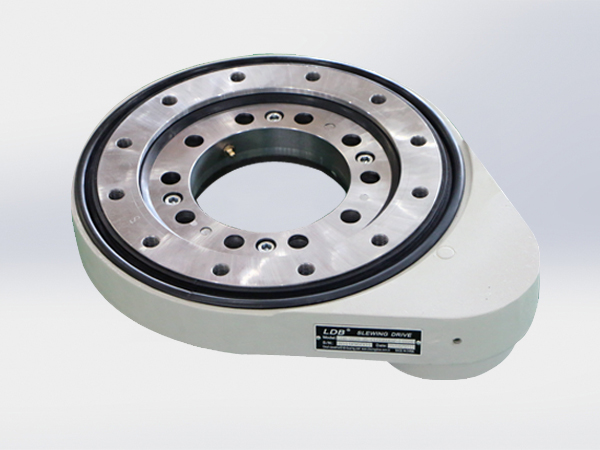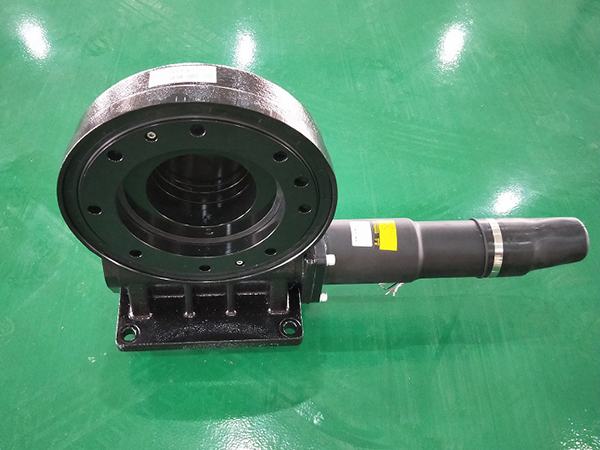¿Cuál es la razón del alto ruido de la transmisión por engranajes rectos?
Además de la precisión de funcionamiento, la capacidad de carga y la vida útil a la fatiga, el ruido también es un indicador importante del rendimiento de una transmisión por engranajes rectos. El ruido no solo afecta el entorno operativo del equipo, sino que también afecta la precisión de la transmisión de engranajes y la operación y transmisión general de las transmisiones de engranajes rectos. Con la emisión sucesiva de las normas ISO14000 e ISO18000, el control de su ruido de transmisión se vuelve cada vez más importante.
La razón del alto ruido de la transmisión por engranajes rectos

1. Influencia de la precisión de los engranajes: la precisión de los engranajes a menudo se diseña teniendo como base los beneficios económicos, ignorando el impacto de la precisión en el ruido y la holgura del accionamiento. Cuando no se puede alcanzar la precisión del engranaje, aumentará el ruido de funcionamiento.
2. Influencia del ancho del engranaje: bajo la condición de par constante, el gradiente de la curva de ruido del ancho del diente grande es menor que el del ancho del diente pequeño, y el ruido del ancho del diente pequeño es relativamente grande.
3. Influencia del paso de diente y el ángulo de presión: el paso de diente pequeño puede hacer contacto con más engranajes al mismo tiempo, la superposición de engranajes aumenta y el ruido es mayor.
4. Influencia del coeficiente de desplazamiento del engranaje: cuando se mejora el rendimiento de la transmisión del engranaje, la capacidad de carga, el coeficiente de desplazamiento, el momento central, etc. no son adecuados para la operación, es fácil generar ruido.
5. Control de velocidad: el ruido de la transmisión por engranajes rectos también es diferente a diferentes velocidades. Con el aumento de la velocidad, también aumentará el ruido del accionamiento.
6. Influencia del equilibrio dinámico: la desalineación del conjunto conducirá a un funcionamiento desequilibrado del sistema del eje, y en el estado de engrane de engranajes semi-flojos y semi-ajustados, conducirá a un agravamiento del ruido de conducción, y el conjunto de engranajes desequilibrado afectará la precisión del sistema de transmisión.
7. Piezas sueltas o dañadas: la flojedad de piezas individuales durante la instalación conducirá a un posicionamiento incorrecto del sistema, y el engrane anormal hará que el movimiento del eje genere vibración y ruido. El daño a las partes de la transmisión también dará lugar a un movimiento inexacto o inestable del sistema, lo que resultará en partes móviles desequilibradas y vibraciones y ruidos durante el movimiento a alta velocidad.
8. Uso o mantenimiento inadecuados: Las impurezas sucias entran en la transmisión y causan desgaste, provocando un mal funcionamiento del ruido o una lubricación inadecuada, provocando que el desgaste aumente el ruido. Después de comprender por qué la transmisión por engranajes rectos es ruidosa, echemos un vistazo a las soluciones específicas.
Solución de ruido de funcionamiento de la transmisión por engranajes rectos

1. Mejore la precisión del engranaje impulsor y reduzca el error de transmisión y el ruido del equipo. Error en el perfil del diente de control. La reducción de la rugosidad de la superficie del diente puede reducir la emisión de ruido.
2. Cuando el espacio de transmisión de la unidad lo permita, aumente el ancho del engranaje, reduzca la carga de la unidad bajo un par constante, reduzca el devanado del engranaje y reduzca la excitación del ruido, mientras que aumentar el ancho del engranaje también puede aumentar la capacidad de carga del engranaje y mejorar el par de rodamiento de el reductor
3. La selección correcta y razonable del coeficiente de desplazamiento no solo puede compensar el momento central, evitar el socavado del engranaje, garantizar que se cumpla la condición concéntrica, mejorar el rendimiento de transmisión del engranaje, aumentar su capacidad de carga y la vida útil de el engranaje y controlar el ruido de funcionamiento.
4. Aumente la dureza de la superficie del diente del engranaje impulsor del engranaje recto. La alta dureza de la superficie del diente del engranaje puede reducir la posibilidad de deformación del engranaje y, al mismo tiempo, tiene cierto efecto en la reducción del ruido de conducción.
5. Hacer un buen trabajo de absorción de impactos entre el equipo y la transmisión para evitar resonancias y ruidos entre el fuselaje y el soporte de la base y las piezas de conexión. Se pueden seleccionar materiales base de alta dureza y alta amortiguación para reducir el ruido y la vibración.
6. Repare regularmente el equipo, apriete las piezas, encuentre y repare las piezas defectuosas a tiempo y reemplace las piezas que no se puedan reparar a tiempo para estabilizar el equipo y reducir el nivel de ruido.
7. Suplemente el aceite lubricante a tiempo, elija el aceite lubricante adecuado, evite el calentamiento del equipo, el desgaste y otras fallas causadas por una lubricación insuficiente y cause problemas de falla, como un aumento del ruido.
8. Mantenga limpias las partes internas de la transmisión y evite que las impurezas entren en la transmisión por engranajes rectos y afecten el funcionamiento normal del sistema de transmisión.
Lo anterior tiene que ver con las razones del alto ruido de funcionamiento del reductor de engranajes rectos, y también incluye soluciones específicas. Puede haber muchas razones para el ruido durante el funcionamiento del reductor. Cabe señalar que la influencia de varios aspectos del reductor rotativo es de Reducir el impacto del ruido de muchas maneras.




